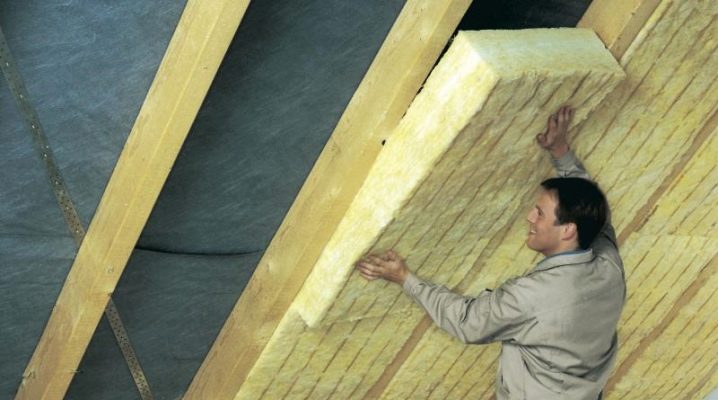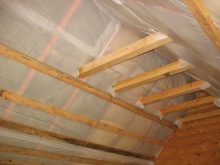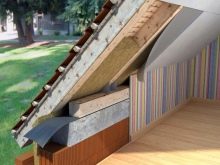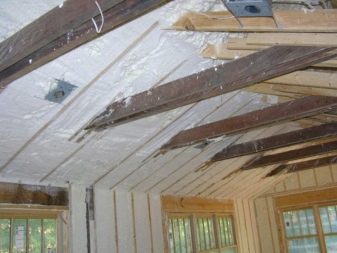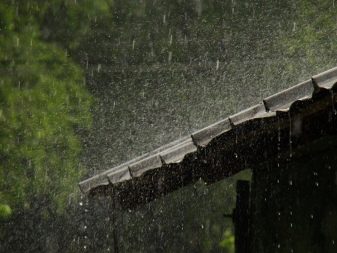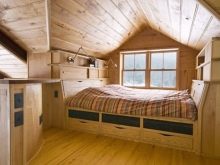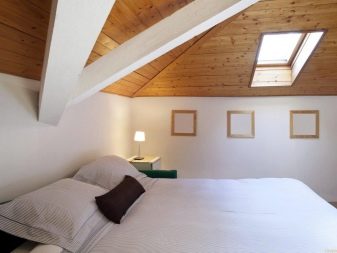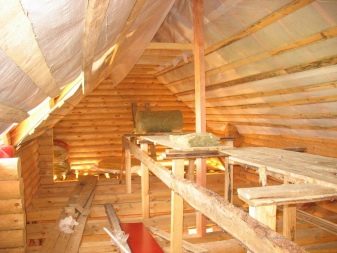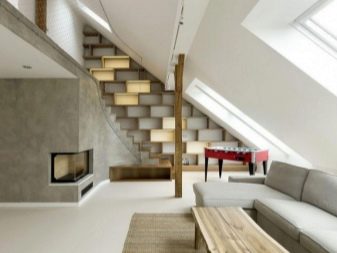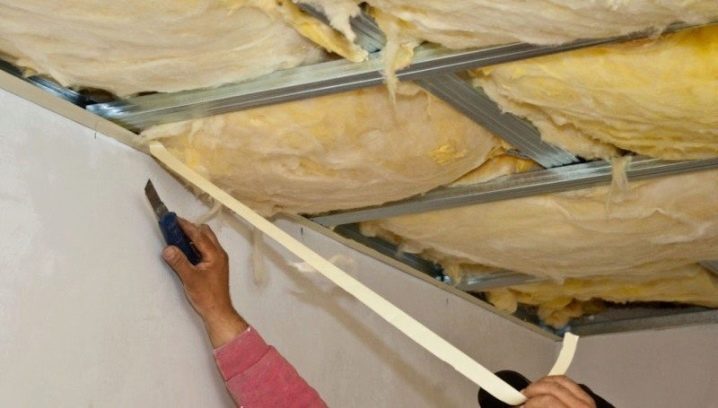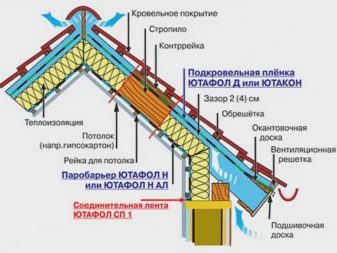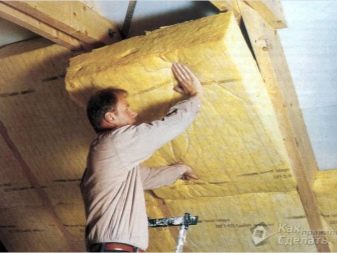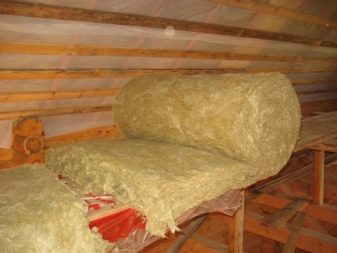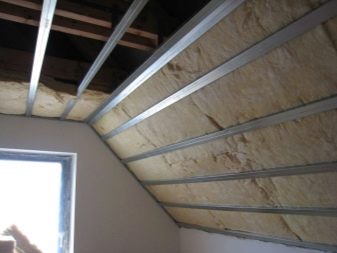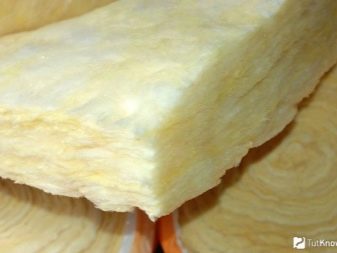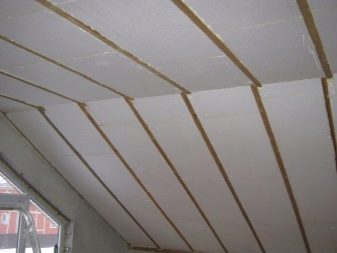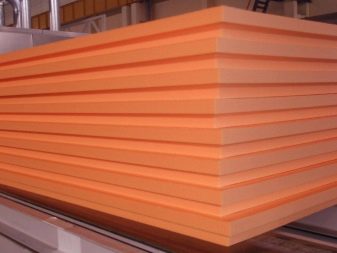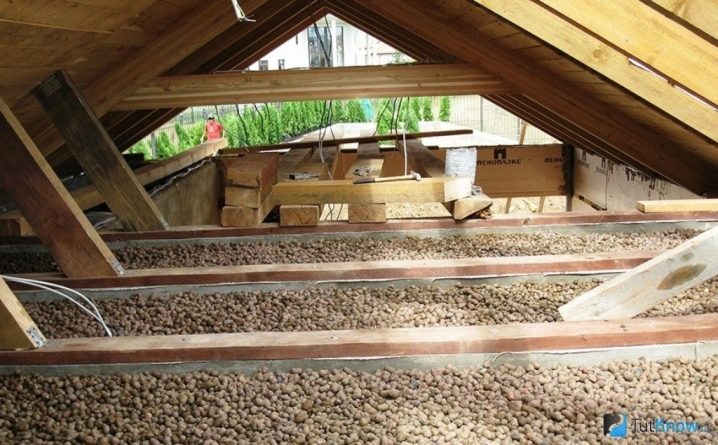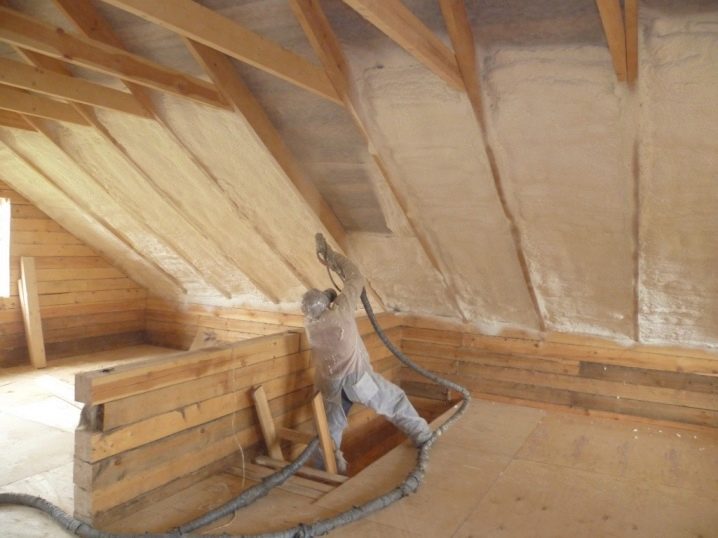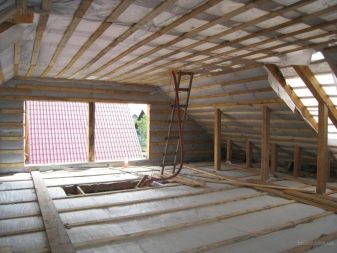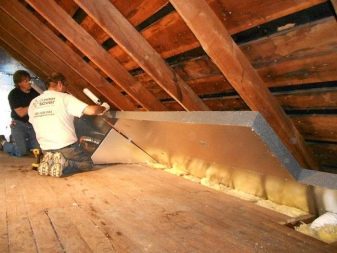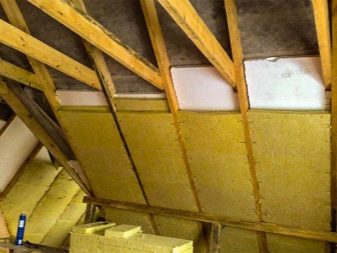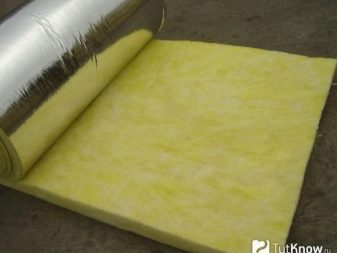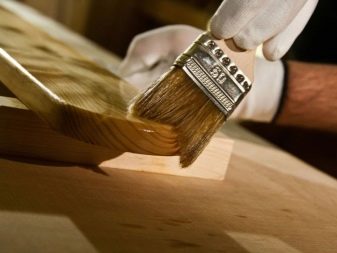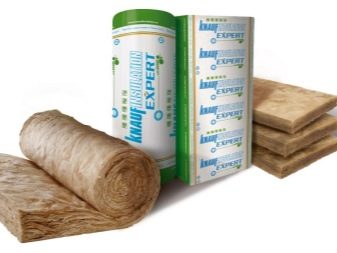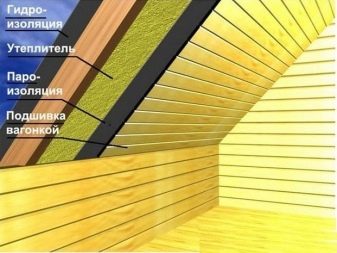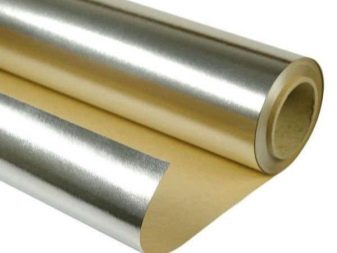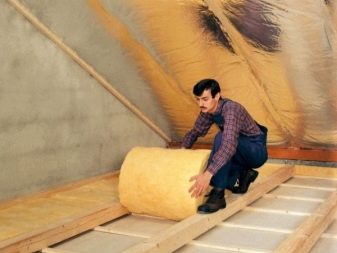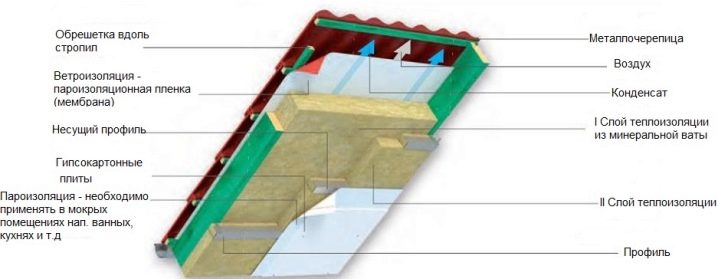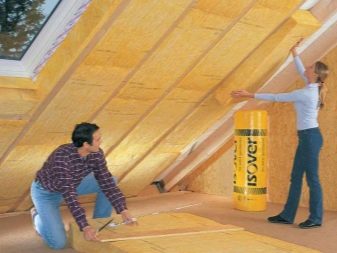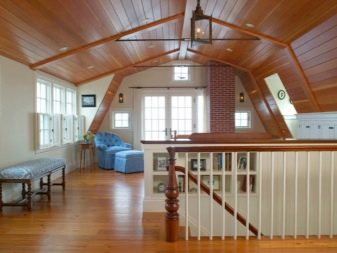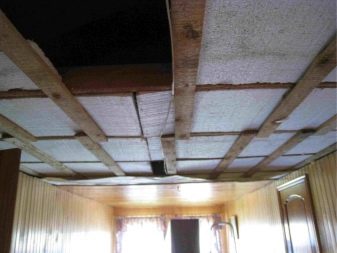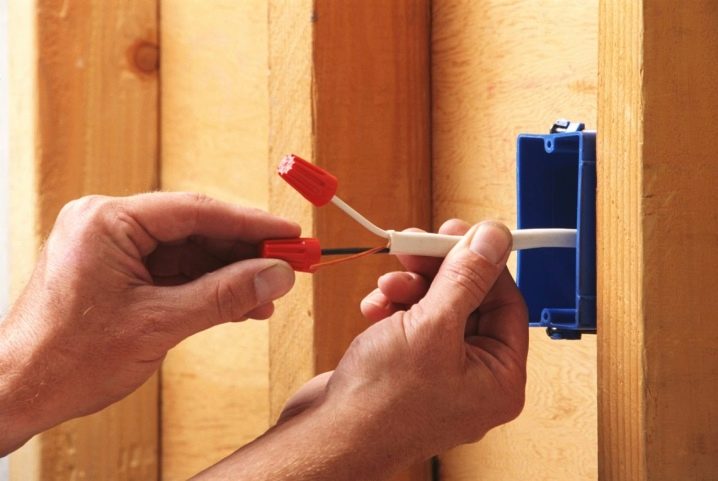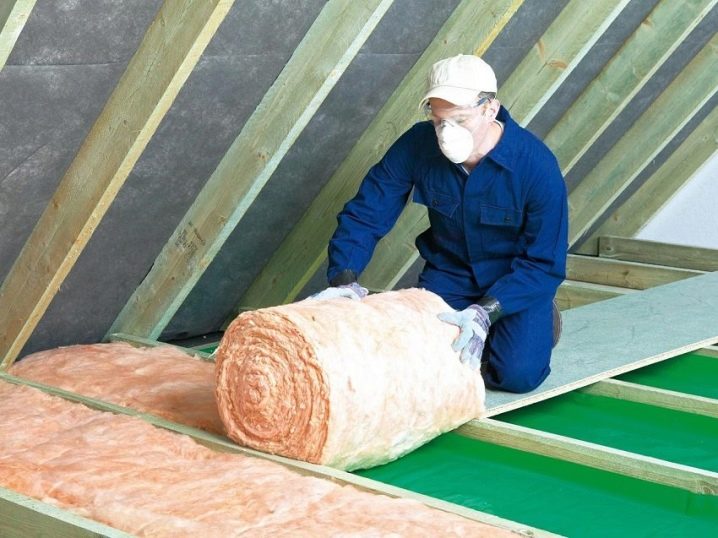Why and how to insulate the roof from the inside: detailed instructions
When building or repairing a private house, the construction of the roof is one of the most important stages. If it is not properly designed, then precipitation will accumulate on it, which will be an extra burden and will contribute to the deterioration of the roofing material. If it is wrong to lay the roof, then moisture will get into the seams and eventually it will leak into the house, and if you do not warm the roof from the inside, the cold air will quickly get into the room and will not allow it to fully warm up by any means, that is, to live in such conditions round year will be impossible.
Physical factors: impact
Any house that is used for housing must meet certain requirements in order to live in it is cozy and comfortable.It is important to lay the foundation correctly so that the house does not shrink and crack, insulate it and build a roof. The choice of coverage is very important, because it affects the weight that applies to the house, the time to perform work on the floor and cost. In addition to all this, it is necessary to take care of the insulation of the inner side of the roof so that the construction of the house remains as reliable as possible, and the residents feel comfortable at any time of the year.
In different climatic conditions, buildings are affected by various factors.
For our latitudes will be characteristic:
- rainfall;
- snow, croup and similar phenomena;
- hail;
- roof icing;
- active sun;
- strong wind.
To withstand all these negative factors, the roof must be covered with sufficiently dense materials that can reliably protect the house for many years.
A private house is a structure that consists of a main floor and an attic. If the roof is not insulated, then up to 15% of the heat from the room leaves during the cold season through the ceiling, which makes it necessary to heat the rooms intensively. In addition, having a warmed attic, this space, if desired, can be made residential and used as rooms of a specific purpose.In the face of a large family is ideal.
Processes inside
In order to properly insulate a private house and make the roof a complete protective mechanism for both the main room and the attic, you need to be able to choose the right material for the insulation. Typically, the selection is based on the physical processes occurring inside, under the roof.
The most important are a few.
- Heat exchange, which arises due to different temperatures in the house and beyond. If the roof is not insulated, then part of the heat goes through the roof, and the insulation prevents this process and maintains optimum temperature in the room.
- Moisture exchangewhich arises from the person himself, his breathing, evaporation from body temperature to the processes of cooking, when the fumes rise to the ceiling, carrying on themselves the particles of moisture that are discharged through the roof. If the roof is insulated, the humidity level remains optimal, and unnecessary odors can be removed by ventilation.
When insulating the roof, you can protect yourself from temperature fluctuations inside the room, because the insulation has its own temperature, which is often slightly higher thanwhich is outside, and does not allow the heat of the building to go outside, which eliminates the need for additional heating, which requires reserve funds.
Insulating layer helps to avoid condensationwhich is formed by contact of hot and cold air, therefore laying it together with a heater will help preserve its appearance and performance. Properly performed work increases the life of the building by almost two times and minimizes the need for repairs every year.
Necessity or whim?
A private house often has a pitched roof that forms an attic space on top of the main residential floor. If there is no insulation, then living in such conditions will be very uncomfortable due to the lack of heat in the cold season. If the attic is made in the form of a residential floor - the same attic, then the process of insulation should be mandatory.
Any roofing material will not be able to protect as foam, mineral wool or other type of coating. In addition to the insulation itself, it is important to use a vapor barrier film that will cope with all sorts of fumes.
If you ignore the installation of thermal insulation coating, then in addition to the cold in the house, problems with the roof truss system will begin very soon, which will rot and there is a risk of collapse. The same effect can be observed with the wrong installation technology or inaccurate choice of insulation. If you choose the thickness of the standing insulation, then instead of protection will be the opposite effect. Under normal conditions, with temperature differences, protection against condensate and heat removal is provided, which makes it possible to feel comfortable in any weather.
If the thickness is broken and a thin insulator is chosen, then an excessively large amount of condensate will form on it, which will contribute to the rapid decay of the rafters and the disturbance of the microclimate of the room.
Non-observance of norms is dangerous for health and safety.as the roof structure can collapse. The choice of material that needs to be warmed depends on a variety of factors that are important to consider in order to be able to independently install what you need. If you have difficulties with the choice of insulation or its installation, it is better to turn to professionals and get comprehensive advice and assistance in installation.
Roof "pie": what is it?
Properly designed roofing involves a large number of layers of different materials that overlap each other, which resembles a pie - hence the name. The basis of the construction "pie" is the rafters, which are already laying all the other layers.
To properly lay out all the layers, it is important to know their correct sequence, which looks like this:
- Roof.
- Crate, on which installation of finishing materials will be made. Stacked can be continuous or with gaps.
- Kontrobreshetka in the form of bars, which serves to ventilate the space under the roof itself.
- Film for waterproofing.
- Materials for thermal insulation.
- A layer of material for vapor barrier.
- Creation of crates, where insulating materials and inner lining are mounted.
- Material for interior plating.
If you put the “pie” correctly, you can avoid the loss of heat from the living room during the cold season, and also it will help from overheating of the space in the intense heat. The waterproofing layer will help protect the insulation from moisture coming from the outside, and the vapor barrier will protect against all sorts of fumes.
Pitched roof - a fairly common type, because for her it will not be difficult to pick up all the necessary materials. The highlight of the high attics is the convenience of working on their insulation and the ability to equip a full-fledged living space.
Without additional work it will be extremely unpleasant to stay in it - it is very cold in winter and too hot in summer.
Requirements for materials and their functions
To carry out quality work it is necessary to choose the right materials. It will depend on them how accurately it will turn out to make comfortable living conditions and secure roof supports. The choice will depend on the region of location of the building, its size, destination, as well as the funds that are for the purchase of materials.
There are four main ways of warming.
- Mineral wool usewhat is the most commonly used material due to its properties. It is best to acquire a basalt variety. It is advisable to get a quality certificate in the store in order to know for sure that the products are safe and meet all norms and standards. There are varieties that have a lighter weight, they are suitable for work in conditions of independent insulation of the room.Positive qualities of wool can be considered non-flammable composition and repulsion of moisture, which corresponds to the main task of this layer. In addition, it does not like rodents, which means you can not worry that someone can start the house, especially on the roof.
Of the minuses, it is possible to note a rather high cost, but it is fully compensated by positive aspects.
- The use of glass wool. Some time ago, this material was considered basic for roof insulation, but due to certain dangerous properties, it soon found safer counterparts. The thermal insulation of glass wool is not bad, and the efficiency is very high. While working with such material it is very important to comply with all safety rules, namely, to use a protective suit, gloves, glasses. It is important to close the nasopharynx and eyes so that no pieces of glass dust get into them.
People with allergies will not be able to live in such a house, so you need to be able to choose the type of inner warming coating correctly.
- Polymer roof insulation - This is a special tile of foam and expanded polystyrene. They have both advantages and disadvantages. This is an inexpensive option, because anyone can afford it, but if you look into the minuses, then you should think well about purchasing such insulation.These materials are very flammable, and when burned, they emit a large amount of smoke, which is very dangerous for humans.
Typically, this type of resort in the case when other options do not work.
- Insulation with expanded clay. This material is very often used for floor insulation and has good thermal insulation properties, but it is very difficult to use it for the roof because of its heavy installation. Usually only experienced workers can cope with it to make the internal insulation of the ceiling in the house.
If we consider alternative options, among them emit polyurethane foam, which can be used in two states - in the form of plates and foam. It is advisable not to take plates for arranging the ceiling, because it is inconvenient to work with them and they have a very high cost. At the same time, liquid or foamed polyurethane is easy to apply and has several advantages. With it, you can fill the voids of any shape and size, very well clogged slots and lines of openings. If the remaining materials need to be cut and to achieve maximum fit, then in this case the foam itself falls, the main thing is to distribute it correctly and evenly.
It is very convenient to use foam for the roof of slate or broken structures.when there are many drops on the roof and the frame has significant differences. Another significant advantage is the autonomy of hydro and thermal insulation, which are not needed for polyurethane foam. In addition, the material has excellent performance in combating flammability, which ensures safety at home.
How to choose?
Choosing material for warming it is important to understand what exactly it is worth paying attention to, which indicators will play a decisive role in the selection of one or another type.
The main criteria are:
- Mass of material. Heavy insulation will serve as an additional mass on the house itself, which will affect both the roof rafters and the construction as a whole. If the house is built of high-quality brick or foam blocks, you can allow enhanced insulation, but in this case you need to make the rafters more powerful, so that they can withstand a lot of weight.
- Heat conductivity index. The lower the numbers, the better for the roofing material. If the index is approximately equal to 0.04 W / m * s, then this would be the best option.
- Indicator of resistance to adverse environmental factors.
- The density of the material that affects the heat transfer of the material.If the density is low, the porosity of the insulation increases, which reduces thermal conductivity and leads to an increase in thermal insulation properties.
- Ability to absorb moisture. In order to repel moisture, any insulation can be treated with a hydrophobic substance. Some materials are already sold with such impregnation.
- Flammability, which is an important factor for the arrangement of the roof.
- The ability to resist low temperatures.
- Resistance to chemical elements.
- Environmentally friendly material.
Having considered all these indicators, the best option would be the use of mineral and glass wool. For sale glass and mineral wool in the form of rolls or plates. It is safer to heat mineral wool because it is more resistant to fire.
If we consider modern heaters, the most advanced technology will be roof cladding penoflex. It is a durable and lightweight unit that can be easily installed on any surface, be it a wall or a ceiling. You can cut the desired piece with a regular knife.
In addition, the distinctive conditions are the storage of the penoflex, which can be outside at any temperature, but it is better that it be wrapped.
It is convenient to use foam polystyrene, which is also called penoplex, in rooms with unfavorable conditions, because it is not afraid of them, and various microorganisms will not develop in it. A very important feature is the environmental friendliness of this heater. It does not emit any harmful odors and fumes and is completely harmless to both adults and children.
Training
In order to carry out thermal insulation procedures, it is important to clearly understand which roof to work with. Having correctly defined the order of work, you can quickly and efficiently produce roof insulation. It is necessary to take into account the materials that will be on hand during work. It is important to clearly understand for yourself exactly what to work with and what to do.
If the process of warming has become completely clear, then you can cope with absolutely any roof, whether it be at a rural house or a large villa by the sea. In order to carry out insulation work, it is important to prepare the roof itself for this.
There is a specific procedure for this, which includes:
- inspection of the truss system so that it is possible to identify the damaged boards in time and replace them;
- woodwork processing antiseptic;
- check communications if they are located under the roof. This applies to the pipeline and wiring.
As soon as the roof is ready, you need to check the availability of all the materials with which the insulation will be made, prepare the tools, and only after that you can get to work. The workflow has its own rules and laws that you need to know in order not to make mistakes and get a good and high-quality result.
The process step by step: how to do?
In order to work quickly and efficiently, it is important to prepare well, read the articles on the topic, watch the videos to clearly see what is being done in the process of internal insulation of the roof and why.
The algorithm of work is reduced to four points.
- Mounting waterproofing layer. This task is worth making at the time of covering the roofing material. Waterproofing is mounted on the rafters so that there is a slight sagging. Slate house involves laying this material directly to the insulation. It is important to properly lay waterproofing - its smooth side should be on top.The strips of material need to be sealed with adhesive tape, so that gaps do not form over time. Only after that, the rails are packed on the rafters, to which the installation of the batten will be made. On the finished boards and you need to lay the roofing material.
- Installation of insulation. It is important to choose a heat insulation mat with the required thickness, and lay it between the rafters. The material is placed in a spacer or on a rough binder, which is made from small-width rails, fishing line and rope, which are attached with nails to the rafters. Heat insulation mats take up space, and extra pieces are cut out.
If you want to maximize the quality of the room to warm, the mats are stacked, shifting with each row to the side.
- Placement of vapor barrier layer. This material consists of a smooth side, which is placed to the insulation, and more rough, which is directed to the building itself and performs the collection of steam emissions from the room. Laying such a film is an important point for its full work. The installation process takes place with a stapler. In this case, you can do without kontrlatki, but it is important to glue all the joints with adhesive tape.
- The process of installing profiles and guide bars. These materials serve as the basis for the mounting of decorative elements and ventilation, which is necessary for the proper operation of the insulation.
The technology of work will be similar, be it a cottage, where there is a flat floor in the house, or a large country house, where a gable roof is built. The right choice of materials and installation in the right sequence will give the desired result.
Attic floors
When choosing insulation for the attic floor, it is necessary to take into account its thermal protection, durability and stable qualities in relation to adverse environmental phenomena. It is important to take into account the type of overlap, the material from which it is made. Concrete with wood have their own characteristics.
The process of installation of insulation depends on the materialif it is mineral wool, it is better to use thick layers (about 20 cm), but if there is a desire to create increased thermal insulation, you can increase the thickness to 30 cm. Laying of wool occurs only after the vapor barrier has been placed. It is best to lay it under the overlap of boards or timber so that they do not absorb moisture and do not rot.If you can not put a solid piece of vapor barrier, it must be glued together with adhesive tape.
After that, work begins with insulation, which is placed in a wooden frame so as to fill all the empty seats. As soon as the mineral wool was placed, a waterproofing layer is placed on top, which prevents the wool from absorbing the extra wool. It is especially important to do this if the next step is to pour concrete when the second floor is planned for construction. Instead of concrete, you can make the flooring of OSB-plates. In this way, you can insulate the attic and, if desired, make it a living room.
Chutes
Insulate the slopes in various ways, the choice of which depends on the construction of the rafters, their height and skills of the person who will work with the surface.
There are only three options for how to insulate the pitched roof:
- with thermal insulation, which is located between the rafters, the frame must be flush with the insulation;
- with thermal insulation between and above the rafters, the frame is wrapped with insulation on all sides;
- with thermal insulation between and under the rafters, the frame is not insulated.
Warming of a sloping roof is best done with the help of mineral wool mats or with fiberglass base.Installation of the roof can be done both inside and outside. Only layers and their stacking order will differ. During internal work, the roof is insulated using a layer of waterproofing, on which the insulation material is already laid, and after that the vapor barrier tape is stretched.
A broken roof is a special design that you need to be able to properly insulate., especially if the whole procedure will be done by hand. Knowing the technology and the correct location of the layers, you can get a quality roof covering that will protect the house from heat loss and moisture penetration and help create a comfortable microclimate inside.
Flat roof: features of work
If there is a need to insulate a flat roof, the installation of appropriate materials is often done after the roof has been installed. Works are carried out indoors, and after they are completed, the height of the ceilings decreases significantly, which is a noticeable disadvantage with all the other advantages.
Before starting work, it is important to think about how exactly the attic room will be lit.
We warm the flat roof by stuffing the bars along the entire length of the roomafter which they need to be divided into squares, in which the insulating material will be placed. Hold it in the cells can be a cord or glued to the surface, which is less desirable. The cord can be removed when all gaps are covered with foam, which will keep the insulation in place.
The first layer should always be a heat-insulating layer, and the last - a vapor barrier, which together will give the desired result of a dry and warm roof. If you do not use protective layers, the insulation will soon become unusable and will cease to perform its functions.
When work with insulation is over, you need to pay attention to the wiring. If it is present there, only then proceed to the installation of lamps and decorative decoration of the room.
Useful tips
If the attic is presented as a large and cold room, you can use various kinds of insulation, after which you can live in this room. It is possible to lay insulation material both during the construction of the roof and after that.If the roof is already covered with slate or other material, then the work is done from the inside, which changes the location of the layers during the laying of insulation.
When working with glass wool, it is necessary to use protective agents.so that glass particles do not get into your eyes or nose. The choice of modern materials is not always the most acceptable, if only because of their high cost.
The correct procedure for laying all layers will allow to warm the room to any person, even a non-professional.
For more tips on roof insulation from the inside, see the following video.
